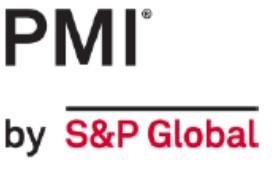Our publishing schedules mean that we don’t yet have the global manufacturing Purchasing Managers’ Index (PMI) or the figures for the countries of the Americas or South Korea (the latter is not out until Monday) – we will update this report and the charts next week – but the data released so far today suggests at least an easing of the downturn with some very tentative suggestions that better times may be on the way.
The manufacturing PMI for the UK moved up slightly compared to the January reading (and the flash estimate that we reported last week) but at 47.5 it still points to a contraction in activity in the sector, with this “improvement” largely being driven by an extension of suppliers’ delivery times which lengthened to the largest extent since July 2022 thanks to the issues with shipping around the Red Sea. Longer delivery times is taken by the survey to be because of increased demand and, therefore, positive in the calculation when, in fact, the current situation should be a negative to the overall PMI.
The pace of decline in the output element of the index was at its slowest for three months and appears to have been concentrated in the consumer and intermediate goods sub-sectors (the notes don’t mention investment goods but we can imply that output here must have been at least flat if not growing). Total new orders fell for the 11th month in a row, with export demand extending its negative run to 25 months. Employment in the manufacturing sector fell for the 17th successive month.
The Euro-zone saw the manufacturing PMI edge down slightly compared to January but this was entirely due to Germany (which had the largest reduction compared to the January figure in this report), with the index increasing in 6 of the other Euro-zone countries covered and unchanged in Austria. Overall, the rate of decline in output was the same as in January while new orders fell at their slowest rate for nearly a year. The index was also helped down by a shortening of suppliers’ delivery times (the opposite to the UK trend).
Among the individual countries, Greece continues to have a manufacturing PMI reading above 50 and the improvements in both Spain and Ireland took them back into positive territory for the first time since March and August 2023 respectively. There was also a very strong improvement in France – the largest of the countries we have the data for at the time of writing – but not enough to get their PMI above the 50 threshold. However, the trend in Germany stands out with the overall PMI falling to 42.5 as the pace of decline in both output and new orders accelerated and job cuts deepened.
Elsewhere in the European Union (EU), the manufacturing PMI also improved while remaining in negative territory for Czechia, Poland and Sweden; Hungary shared this trend but has a reading above 50 while the already negative index in Romania weakened slightly.
Outside the EU, despite a higher figure than in January, Switzerland has the weakest PMI in this report at 44.0 but the modest rise in the reading for Turkiye was enough to move them back to a positive figure for the first time since last June. However, Kazakhstan saw the opposite trend with the February figure falling back below the threshold.
The picture in Asia is more mixed – note that due to a holiday, we don’t get the Korean figures until Monday. Japan and Taiwan saw their already negative readings weaken further while the mildly positive figures for China and the ASEAN group both edged up slightly but Australia saw a significant reduction which took its manufacturing PMI back below 50. Finally, India remains the star global performer with a small increase taking its reading to 56.9, the highest of any of the countries that we have the data for so far.
The individual S&P Global PMI reports are available to download on their web-site at https://www.pmi.spglobal.com/Public/Release/PressReleases but we also have a summary charts report which is available to download below. You should note that the PMI readings for Hungary, Sweden and Switzerland are not compiled by S&P Global but can be found with an appropriate internet search (it also means that they are not part of the global PMI calculation).

